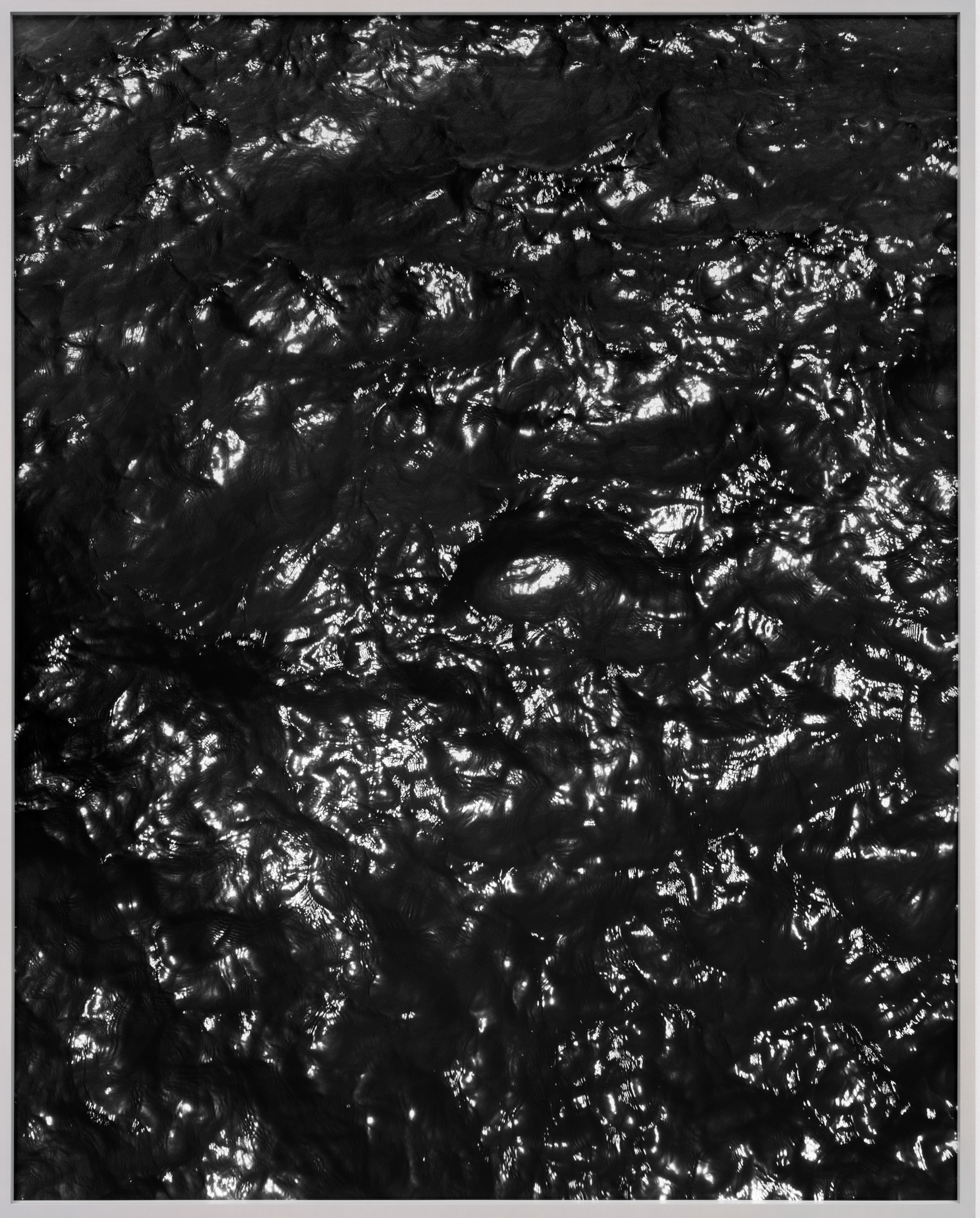Visual affinities extend throughout Sam Falls’ solo exhibition at Hannah Hoffman, suggesting relationships between natural phenomena and man-made objects, while also developing a thematic unity for Falls’ heterogeneous production. A pair of texturally rich photographs with velvety blacks depict the surface of water (Gravity, 2016), with light dancing off the moving body, and the door of a car (Sin, 2016) riddled with bullet holes, each photograph’s pattern of light and dark values playing off the other.
In an implicit pairing, a tent pitched on a city sidewalk seen in the photograph Heimatlosigkeit (2016) resembles the dome-shaped rock on a book cover framed side-by-side with a Polaroid in Untitled (Rock, Merced River, Autumn, Yosemite Valley 1962–2015) (2015). In Repeater (2016), the dome gives way to an arched tree stretching across a dirt path, and in Back to the Future (2016), this shape is echoed in what looks like paint brushed across the surface of a partially developed photo.

Sam Falls, Heimatlosigkeit, 2016; ©Sam Falls, courtesy of Hannah Hoffman Gallery, Los Angeles.
It is tempting to try to construct a continuum that connects the disparate objects, texts and soundtrack, as if each piece is part of a larger puzzle that will fall into place after everything has been examined and turned around in one’s mind. But Falls shifts easily between media and from idea to idea without a tyrannical concern for cohesiveness.
The Sun is my Undoing (2016) is emblematic of his practice of exposing portions of an object to the destructive rays of the sun, while protecting others, so that pigments leach out in a pattern. The small, cloth-bound book cover, detached from pages of the Marguerite Steen novel it once covered, is also a visual pun; spread flat on the wall, the plum-colored sun-faded spine flanked on either side by deep-purple flaps announces its bleak state with its title. Here, one might seek to extend a political motive to Falls: surely it is no accident that he used the cover of this book—a novel about the slave trade—as shorthand to signal a major thread of his work; or is the title merely a convenient conceptual slogan too attractive to resist? More likely, it serves as a reminder of mortality, like Untitled (Red Rover Mine, Acton, CA, Flower Bed 1) (2016) which is faded, torn and dirt-encrusted from exposure.
One can read a shifting emotional register in Falls’ work. The atmospheric and vaguely mournful performance by Imaad Wasif of the exhibition’s soundtrack echoes the sentiments expressed in the half confessional, half conceptual poem found in Falls’ composition notebook. Falls’ notes of longing and grief, delivered in his first-person writing for the exhibition press release, form a kind of preamble to the exhibition. In his notes, Falls invokes the deceased Chilean novelist Roberto Bolaño as an example of radical empathy that Falls seeks, by implication, to embody. Falls finally reaches a kind of transcendence, returning to a direct experience of nature in the sublime and exquisitely glazed ceramic slabs that contain the impressions of flowers collected from locations presumably near his upstate New York home.


